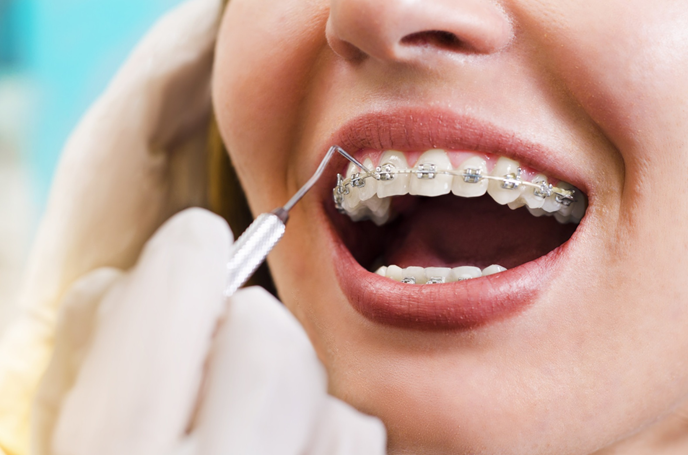Different Types of Braces and How to Choose Between Them

In the US, about 4 million people under the age of 18 wear braces! Whether you’re a child or an adult, braces are a great option if you want to improve your smile or a misaligned bite.
However, did you know that there are different types of braces that you can get? Not all options are equal, and you may be more interested in features of one type of braces than another.
For this reason, learning about your options is vital before you talk to your doctor.
Keep reading to learn about the common types of braces you’ll find today (as well as their pros and cons).
Traditional Braces
These types of braces, also called metal braces, are likely what most people imagine when they think of someone that has braces on their teeth. They have been used for over 1,000 years by people all over the world!
In the past, braces were very bulky and obvious, making them an undesirable thing for someone to add to their smile. Now, however, even metal braces are much smaller and more comfortable than ever before.
The wire for traditional braces will be adjusted once a month or every two months to move the teeth into place.
The main benefits are that the cost of braces with this option is a little lower, there is no change in speech, and there are a lot of brands to choose from. The main drawbacks, however, are that they are more noticeable on the teeth, and they make it harder for the patient to brush or floss.
Lingual Braces
These are one of the braces options that are a little less common but still offer a great way to get straight teeth. Instead of going in front of your teeth, like what you might imagine, these are placed on the backside of your teeth (facing toward your throat).
Not all orthodontists are able to do these types of braces, so if you’re interested in this option, you’ll need to seek out someone that has had the training necessary for the task. These may also take a little longer to place, so keep that in mind if you are going to make an appointment.
The demand for this type of braces has increased, likely due to the fact that they cannot be seen. This makes them a great solution for people that are worried they will be embarrassed by braces on their teeth.
While the main benefit is that they are great for people concerned about their appearance, they also could cause slight changes in speech or pronunciation.
In addition to that, some patients find that their tongue is irritated by the metal. These symptoms will usually go away within a few days or weeks as the patient gets used to the new addition to their mouth.
Self-Ligating Braces
These are braces that are extremely similar to traditional metal braces. The main difference here is that they use clips instead of elastic bands to hold the wires from the braces in the right spot.
This is good because it creates less friction and it makes the braces easier to clean. Self-ligating braces may take less time to see results since they are easier to adjust. They are a great option for patients that don’t like sitting at the orthodontist too long.
The major downside of these braces is that they are generally more expensive.
Ceramic Braces
Clear and ceramic braces are similar to the other types of braces we have mentioned here except that they are much less noticeable and affordable. The braces are made of a tooth-colored material rather than regular metal, so they aren’t quite as obvious as metal or self-ligating braces.
These are a great choice for people that want less obvious dental braces but don’t want to pay extra for lingual braces and still want a discreet option.
Even so, however, there are downsides to this type of braces as well. Ceramic braces are slightly larger than metal braces, so even though they are tooth-colored, they still take up more space on the teeth themselves. In addition to that, the ceramic can get stained if the patient is not on top of their oral hygiene habits.
Which Option Is Right for You?
Everyone has different wants and needs when it comes to their braces, so the first thing to do is always talk to your orthodontist (or dentist) about the options available.
You may not have access to all types of braces due to differing factors, so you need to know what you really can choose from based on your insurance and dental health.
Past that, you’ll want to consider the cost. Dental plans are not typically going to cover all of the costs of orthodontic treatment, so you might have to foot some (or all) of the bill on your home.
Think also about how discreet you want your braces to be.
Are you more concerned about cost or appearance? These are generally the top two factors that you’ll need to consider before making a choice.
Choosing Between the Different Types of Braces
Braces are a classic way to get your teeth straightened and get the smile you’ve always dreamed of. Of course, it takes a little bit of planning and time to choose which option is the right one for you, however.
Look over these different types of braces to see what sounds most appealing, and bring your thoughts to your next orthodontist appointment. They will be able to help you make the best choice for your teeth and general dental health.
If you found this article useful, take a moment to look at some of the other health-related posts on our blog.







